Roy Clay Sr., a Silicon Valley pioneer who knocked down racial barriers, dies at 95
Roy Clay Sr., a Black pioneer in the technology industry whose influence spanned nearly five decades in Silicon Valley, died Sunday. He was 95.
Clay, who lived in Oakland, California, had been in declining health for some time. His death was confirmed by his family.
A hall-of-fame technologist, Clay was a key figure in the development of the personal computer and of tech giant Hewlett-Packard.
He was also credited with breaking down racial barriers in a largely white business, earning the nickname “godfather of Silicon Valley” for recruiting generations of diverse talent, including math and science graduates from historically Black colleges and universities.
"He should go down in history as one of the leading early figures that put Silicon Valley on the map," longtime technology executive Ken Coleman told USA TODAY. "He was a technical genius and an amazingly kind and generous human being − a great example of both a professional business man and a committed citizen and neighbor."
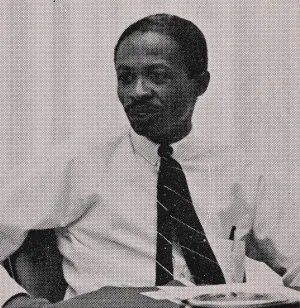
For much of his life, Clay belonged to a forgotten generation of hidden figures – Black Americans whose seminal contributions to the tech industry went largely overlooked, unlike other prominent Silicon Valley leaders whose notes, letters and papers are meticulously stored in historical archives.
So Clay took on the task of chronicling his journey from a modest upbringing in an all-Black town in the Jim Crow south to the height of the technology industry. In 2022, he published a memoir, “Unstoppable: The Unlikely Story of a Silicon Valley Godfather" with the help of his sons and biographer M.H. Jackson.
Proud of his firsts, Clay used to paraphrase Ralph Waldo Emerson: “I went where there was no path, and I left a new trail.”
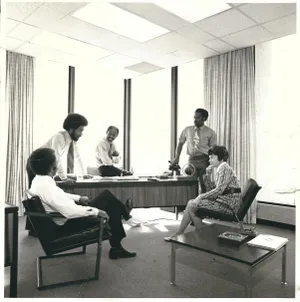
From Missouri roots to Silicon Valley gold
Born on Aug. 22, 1929, and raised in Missouri, Clay's father worked in building maintenance for an electrical company and his mother was a seamstress. Clay had eight siblings.
His mother taught him that education was his highest priority. "With education, you own something that can't be taken from you," she told him.
Clay did his schoolwork by candlelight until his father learned how to install electricity by watching others at work. The family did not have running water and a toilet until he was 12.
In a two-room schoolhouse for Black students in the Ferguson school district, he earned good grades. He used his math smarts to run a craps game and once was caught by a teacher shooting dice in the gym.
"I always had a little bit of hustler in me and thought I could outsmart almost anyone with my math and thinking abilities," he recalled in his memoir.
One of the first Black Americans to graduate from a previously all-white college or university in a former slave state, he received a degree in mathematics from St. Louis University then landed a job interview as an engineer at McDonnell Aircraft Manufacturing in St. Louis. But when he showed up in a black suit and tie, Clay was turned away. The company had no jobs for “professional Negroes,” he later recalled.
With a fierce determination that would become his hallmark in Silicon Valley, Clay kept submitting applications until, in 1956, he secured a job as a computer programmer for McDonnell. He joked that he “brought a little color” to weekly staff meetings.
In 1958, Clay set out for California, where he took a job at Lawrence Livermore National Laboratory working on radiation tracking software to map the aftermath of a nuclear explosion.
“I was no longer that poor little black kid from a segregated town in the Midwest. I was breaking barriers in a new field of technology and making some groundbreaking accomplishments,” he wrote in his memoir. “If only the boys back home at the pool hall could see me now.”
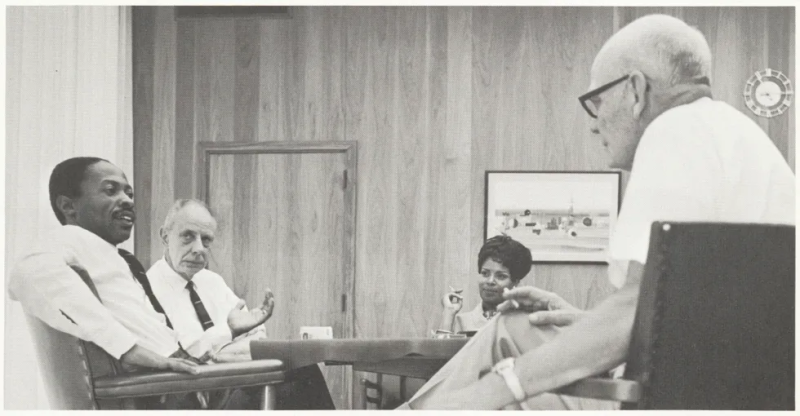
The first Black executive at Hewlett-Packard
Driven by a belief that computers would get smaller, faster and less expensive, Clay wanted to get in on the ground floor building them.
After a stint at Control Data Corp., Hewlett-Packard co-founder David Packard recruited Clay in 1965 to set up the company’s computer business. Clay led the team that built the HP 2116A minicomputer, HP's first computer.
In staffing his division, Clay recruited from the first graduating class of the Stanford University computer science program. He also was among the first to pull in talent from historically Black colleges and universities, such as Morehouse College.
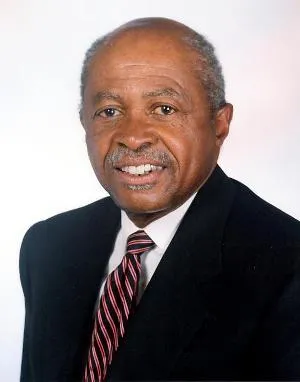
Even in Silicon Valley, the hotbed of out-of-the-box thinking, Clay was known for his innovative streak. He was among the first in the nation to design flexible work schedules for his employees − in large part to accommodate his own penchant for playing a round of golf before work.
Word quickly got around about Clay’s “flex-time” approach. “I started to get calls from many professionals in the field who were looking for new job opportunities. It made recruiting excellent employees a lot easier,” he wrote in his memoir. “Flexible work hours slowly became a part of the culture at HP while I was there, as evidenced by an article I read a couple of years after I had left HP. It stated that HP had invented ‘flextime.’”
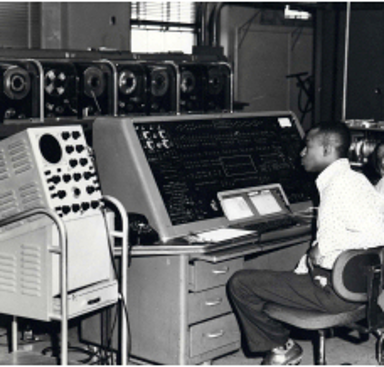
Clay was a remarkable leader, Enrique Lores, CEO of HP, told USA TODAY.
"From being the lead developer of the first HP minicomputer to the first African American executive at HP, he was a longtime tech innovator and community champion," Lores said in a statement. "We're grateful for his leadership, legacy and many contributions to HP and the broader tech industry."
From being the lead developer of the first HP minicomputer to the first African-American executive at HP, he was a longtime tech innovator and community champion.
Enrique Lores, CEO of HP
From venture capital to Palo Alto politics
In 1971 when Clay left HP to form a consulting business, one of the world’s top venture capital firms relied on him to spot investments. His finds for Kleiner Perkins went on to become institutions in the tech world like Intel and Compaq, shaping what Silicon Valley looks like today.
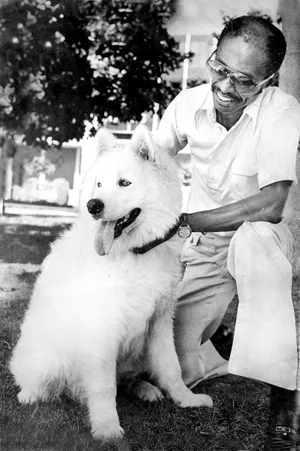
That entrepreneurial sixth sense led Clay to an untapped opportunity in the market for safety devices. He started his own company manufacturing electrical safety test equipment, ROD-L Electronics, which at the time was one of the few tech companies in Silicon Valley founded by a Black American and one of the largest employers of Black professionals. Clay said the diverse range of voices and perspectives gave his company a competitive edge.
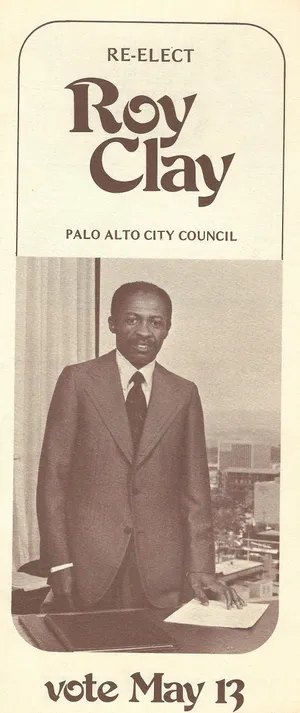
Clay didn’t rest on his laurels. He became a trailblazer in local politics, too.
In 1973, Clay was the first Black American elected to the Palo Alto City Council and later served as vice mayor. He used to slip his business card to those who mistook him for a chauffeur or accused him of trespassing on a floor where the city council met or parking in spots reserved for council members.
“I thought that might help them remember that there was now a Black man sitting on the city council,” he said.
'Nobody had recorded any of this ever'The race to save Silicon Valley's untold Black history
Clay’s family says he was driven by a bedrock set of values – education, family and a no-excuses work ethic – that he learned from his wife, Virginia, who died of cancer in 1995, and from his mother, who often advised him to never allow racism or discrimination to be a reason to give up.
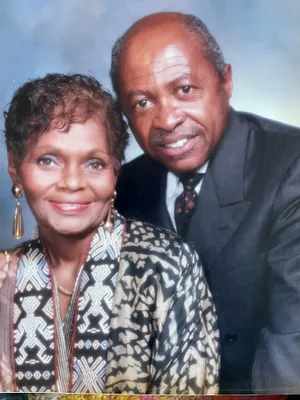
'I still have dreams and hopes for a better future'
An avid golfer, in 1987, Clay became the first Black man to join the private Olympic Club in San Francisco. He came home to find the answering machine blinking. “You better not show your Black face at the Olympic Club, or you and your entire family are dead,” the anonymous caller threatened, using a racial slur.
“After receiving the death threat, I seriously considered withdrawing from the club’s membership. This was one time in my life when I was feeling defeated and not strong enough to stay the course. I had faced so much racism in my life, and I suppose it may have been finally wearing me down,” Clay wrote in his memoir. “When I told Virginia I would not accept the membership, she stopped in her tracks, turned around, and in her unmistakable voice of anger and frustration, said, ‘Wasn’t Jackie Robinson your hero? Did he walk away from the Dodgers?’"
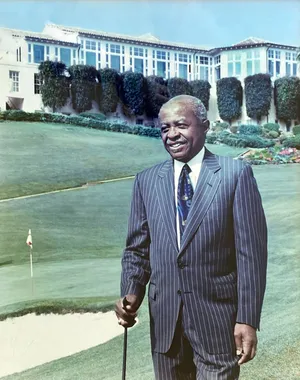
When Clay was elected to the club’s board, his photograph was placed on the clubhouse wall alongside the other directors. A few days later, the photograph vanished.
“It opened a lot of the members' eyes as to what I faced every day because of my race, no matter what position or title I held or ascended to,” Clay recalled.
In a show of support, one of his fellow club members took down all the other photographs, too. He said: “If Roy’s picture is going to be removed, then all the others must come down.”
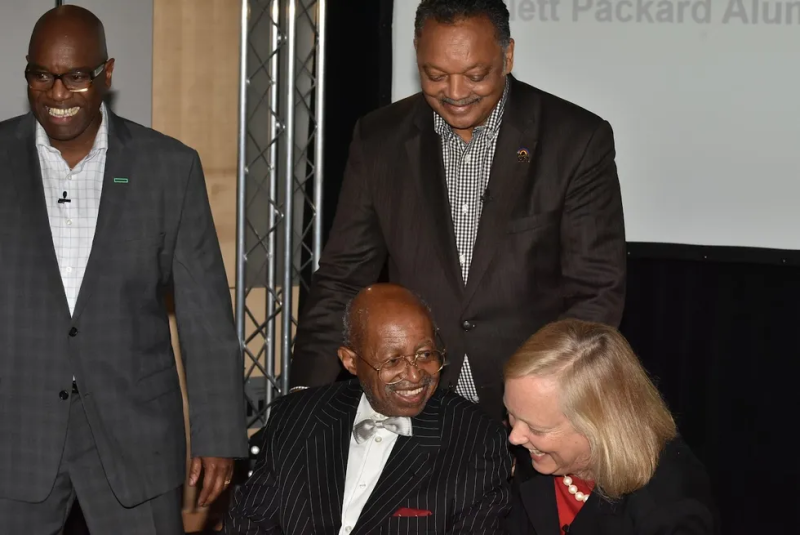
When he was inducted into the Silicon Valley Engineering Council Hall of Fame in 2003, Clay called it his “Mount Rushmore event.” But for all his achievements, he was troubled that he had not seen more progress in race relations in his lifetime.
“Although I am old now, I still have dreams and hopes for a better future,” Clay said in his memoir. “That being said, my kids and grandkids have the same mentality that I did back in the 50s and 60s – nothing is going to stop them from achieving their goals.”
Clay is survived by sons Roy Jr., Rodney and Chris Clay; daughter in-law Iris Clay; grandchildren Connor and Cameron Clay; and sister Myrtle Bridges.
Clay was a lifelong supporter of disadvantaged youth. In lieu of flowers, the family requests donations with the note "In memory of Roy Clay Sr." to Fostering Promise, a nonprofit organization working to eradicate homelessness among youth formerly in foster care.
An event honoring Clay is scheduled for Oct. 29 at Stanford University.
Disclaimer: The copyright of this article belongs to the original author. Reposting this article is solely for the purpose of information dissemination and does not constitute any investment advice. If there is any infringement, please contact us immediately. We will make corrections or deletions as necessary. Thank you.







